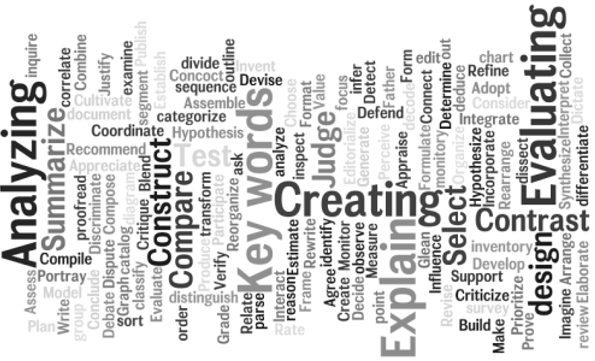- What Can I Tweak & How: Personality & Activity (Type Gray)
- How To Become A Type Gray Extreme: Introversion (Type Gray)
- How To Become A Type Gray Extreme: Introversion II (Type Gray)
- How To Become A Type Gray Extreme: Thinking (Type Gray)
- How To Become A Type Gray Extreme: Thinking II (Type Gray)
- How To Become A Type Gray Extreme: Thinking III (Type Gray)
- How To Become A Type Gray Extreme: Thinking IV (Type Gray)
- How To Become A Type Gray Extreme: Thinking V (Type Gray)
- I Want To Be More Type Yellow (Type Gray)
- I Want To Be More Type Yellow II (Type Gray)
- I Want To Be More Type Green (Type Gray)
- I Want To Be More Type Green II (Type Gray)
- I Want To Be More Type Black (Type Gray)
- I Want To Be More Type Black II (Type Gray)
- I Want To Be More Type Red (Type Gray)
- I Want To Be More Type Red II (Type Gray)
- I Want To Be More Type Blue (Type Gray)
- I Want To Be More Type Blue II (Type Gray)
- I Want To be More Type White (Type Gray)
- Shifting Psychic Modes (Type Gray)
- Change Psychic Dreams From Realistic to Unrealistic (Type Gray)
- Change Psychic Dreams into Empathy and Intuition I (Type Gray)
- Change Psychic Dreams into Empathy and Intuition II (Type Gray)
- Change Psychic Dreams into Altered State Hallucinations
- Changing Output Dreams (Type Gray)
TYPE GRAY EXTREME: THINKING
Thinking (T)
It’s one thing to keep experiencing new things, it’s another to advance in them. Learning and doing new things all the time can lead to shallow thinking and shallow interest (not a good thing for Type Gray’s).
 There will be many new things you try that you feel aren’t quite right for you. But, you will also discover several things that are just the right fit.
There will be many new things you try that you feel aren’t quite right for you. But, you will also discover several things that are just the right fit.
You need to keep doing these things. Do them more often, get better at them, and challenge yourself within those subjects or activities.
Deep and complex thinking is something you need to do regularly. This kind of thinking can come from learning and doing new things entirely, or just learning and doing new things within a subject or activity you already know or do well.
Think about and explore these things deeply to the point of becoming an EXPERT; and then keep going by branching out into related subjects or activities; ![]() (a person with many talents or areas of knowledge).
(a person with many talents or areas of knowledge).
 If you think you have come to an end, it’s just an illusion. Step back and take another look at your path, because there will always be an ABUNDANCE of opportunities to grow.
If you think you have come to an end, it’s just an illusion. Step back and take another look at your path, because there will always be an ABUNDANCE of opportunities to grow.
If you need to, take the road less traveled, or wander the wilderness and leave a path for others to follow.
If you want to learn things that other people don’t know about, you need to do things other people haven’t yet done. Be a pioneer, a thought leader.
 Set your mind to question how things work, or if things work, no matter what the situation, object, or idea. Your goal is to DEBUG YOUR LIFE.
Set your mind to question how things work, or if things work, no matter what the situation, object, or idea. Your goal is to DEBUG YOUR LIFE.
Be critical of your surroundings and yourself. Be honest with yourself in regard to what works and what doesn’t that you do or come in contact with weekly, daily, or even hourly.
Make a list, and take time out of your day to think of ways to fix these problems and make your life more efficient, easy, and smooth. Or, think of ways to remove these issues from the equation of your life if possible. If it’s outdated, update it (this includes ideas and beliefs too). DO YOUR RESEARCH, figure out how these things work to better help you in improving them or removing them.
 IF IT’S BROKEN, FIX IT. If it can run smoother, work out the kinks. If it can be automated, figure out how. If something takes more energy to deal with than it would to redesign it to work more efficiently, take the time to redesign.
IF IT’S BROKEN, FIX IT. If it can run smoother, work out the kinks. If it can be automated, figure out how. If something takes more energy to deal with than it would to redesign it to work more efficiently, take the time to redesign.
Allow your mind to think about many possibilities, associations, and answers. If you’re trying to “build a better mouse trap,” try asking yourself how you could make your home less appealing to mice in the first place, whereby avoiding the need for a trap.
 Taking a few steps back to look at the big picture will help you to see several steps forward to eliminate annoyances and repeating errors, whether it’s in your line thinking, or others.
Taking a few steps back to look at the big picture will help you to see several steps forward to eliminate annoyances and repeating errors, whether it’s in your line thinking, or others.
Be analytical and logical in your approaches, but be mindful and acknowledge subtle emotions. Dive deeper into subjects and activities dealing with technical and scientific ideas and applications.
Check, double-check, and recheck your logic to make sure it is sound. Set your mind to think about the pros and cons of situations, objects, and ideas more often.









